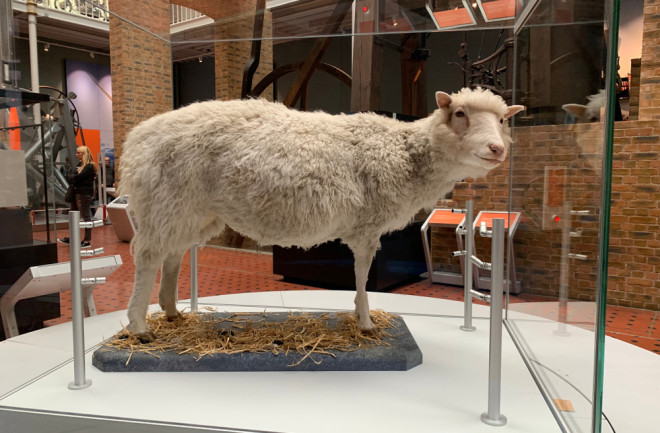In 1996, one of the most famous instances of cloning occurred when Dolly was made from the udder cell of a 6-year-old sheep. But what exactly is cloning? It’s broadly defined as “the creation of an exact genetic replica of a small segment of DNA, a cell or a whole organism.” However, the resulting creature isn’t always a carbon copy of its source. The genetic outcome depends on the specific method employed. Scientists conduct three different types of cloning:
A Beginner's Guide To Cloning
Despite logistical and ethical hurdles, the ability to create genetic replicas could aid medical research and possibly save animals from extinction.
By Molly Glick
Nov 26, 2021 6:00 PM

A taxidermy of the sheep clone Dolly on display at the National Museum of Scotland. (Credit: Jordan Grinnell/Shutterstock)
Newsletter
Sign up for our email newsletter for the latest science news
0 free articles left
Want More? Get unlimited access for as low as $1.99/month
Stay Curious
Sign up for our weekly newsletter and unlock one more article for free.
View our Privacy Policy
Want more?
Keep reading for as low as $1.99!
Already a subscriber?
Find my Subscription
More From Discover
Recommendations From Our Store
Shop Now
Stay Curious
Subscribe
To The Magazine
Save up to 40% off the cover price when you subscribe to Discover magazine.
Copyright © 2023 Kalmbach Media Co.






